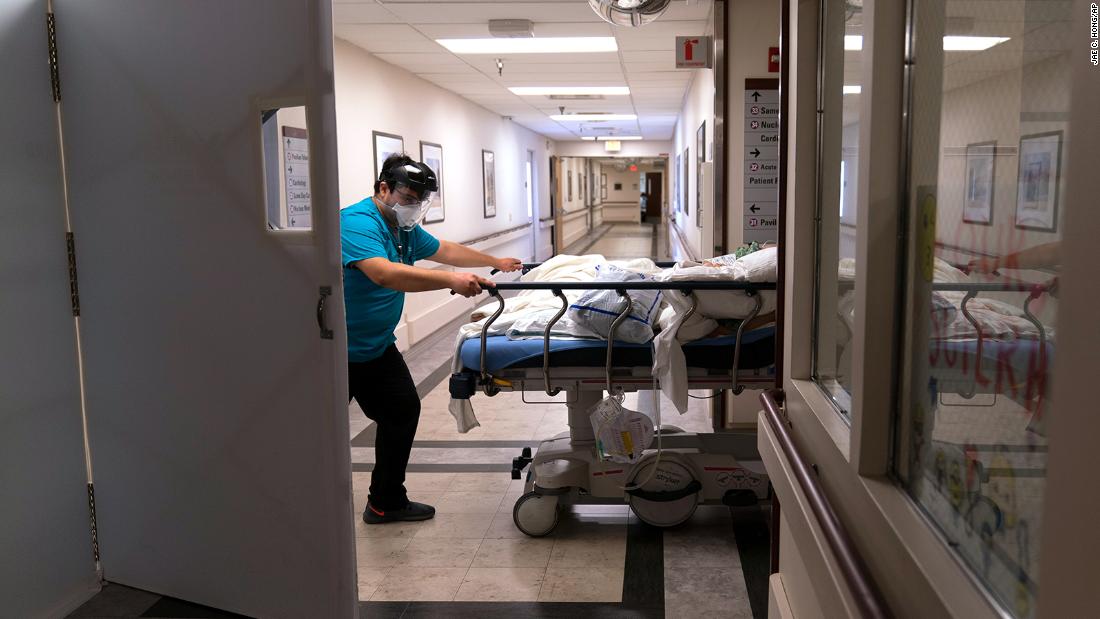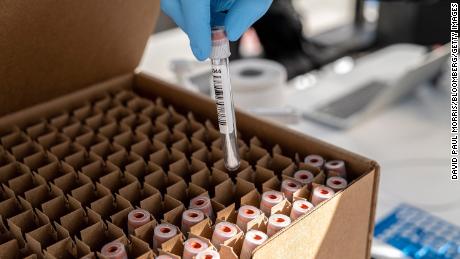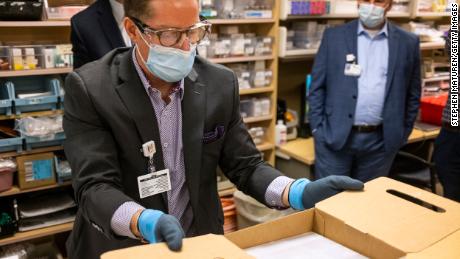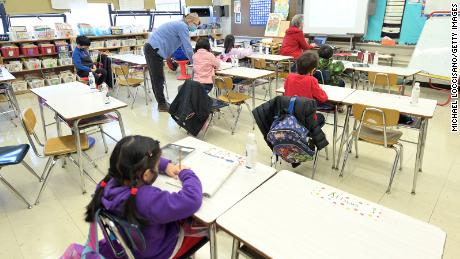The US is about to top 500,000 Covid-19 deaths
“It really is a terrible situation that we’ve been through and that we’re still going through. And that’s the reason why we keep insisting to continue with the public health measures — because we don’t want this to get much worse than it already is.”
And another 91,000 Americans are projected to die from the disease by June 1, according to the University of Washington’s Institute for Health Metrics and Evaluation.
“More rapid increases in mobility or reductions in mask use can easily lead to increasing cases and deaths in many states in April.”
‘Rapid growth’ of the B.1.1.7 strain expected
That’s why experts say the US should also ramp up its testing: not just to track infections and antibodies, but also variants.
“We have been behind on testing from day one,” Kathleen Sebelius, former Health and Human Services Secretary, said Saturday.
She said the US needs to “focus on both testing that we need to identify who has the disease, and then the serology tests that will tell us more about antibodies and what kind of variant is circulating.”
5.5% of US is fully vaccinated
While vaccinations are ongoing, it’s unlikely they’ll help the US reach herd immunity levels any time soon.
More than 17.8 million people have been fully vaccinated. That’s about 5.5% of the US population.
Herd immunity is reached when the majority of the population becomes immune to an infectious disease — either through infection and recovery or through vaccination.
Fauci estimates between 70% to 85% of the US population needs to be immune for herd immunity to take effect against the virus.
The IHME team wrote they do not expect the country will reach herd immunity before next winter.
“The model suggests that we should have a quiet summer,” IHME Director Dr. Chris Murray told CNN Friday. “But we know Covid’s really seasonal, so when the next winter rolls around, we need to have a much higher level of protection to stop Covid in its tracks than we’re likely to achieve.”
To speed up getting at least the first doses into arms, the US should consider delaying the second dose of vaccines, another expert said.
“Everybody needs a second dose, there’s no question about that,” Dr. Ashish Jha, dean of the Brown University School of Public Health, said Friday. “I think the question is, right now we wait four weeks between first and second dose. What if we went six weeks or eight weeks or 10 weeks — not much longer than that.”
His comments came the same day two top US officials — Andy Slavitt, senior adviser to the White House Covid-19 response team and Fauci — said they don’t think the US should delay or skip second vaccine doses. Jha says his suggestion is middle ground to vaccinate more high-risk people quickly.
Teachers’ union calls CDC guidelines ‘safety guard rail’
Amid ongoing challenges for vaccinations and concerns of another case uptick, local leaders are also working to navigate what a safe return to class looks like.
Vaccine and testing are “additional layers” of protection, the agency said.
“There are opportunities for in-person learning at all stages of … community spread,” Walensky said. “I would actually invite schools to lean in and to look at what is needed … to try and get more and more children back to school.”
Randi Weingarten, the president of the American Federation of Teachers, told CNN Saturday the agency’s guidelines are a “safety guard rail” for teachers — and in a recent poll, most educators said they’d be comfortable returning to class with the help of testing, vaccine prioritization and mitigation strategies in place.
And schools face another challenge when it comes to reopening for in-person instruction, Weingarten added.
When schools do put some of those measures in place, including smaller class sizes and social distancing, they need more space and more educators, Weingarten, said.
“The reason that you have so many places that are in hybrid is because they don’t have the space and they don’t have the educators,” she said. “The real issue right now is how do we help take the places that are on remote and turn it around.”
CNN’s Maggie Fox and Lauren Mascarenhas contributed to this report.
![]()








